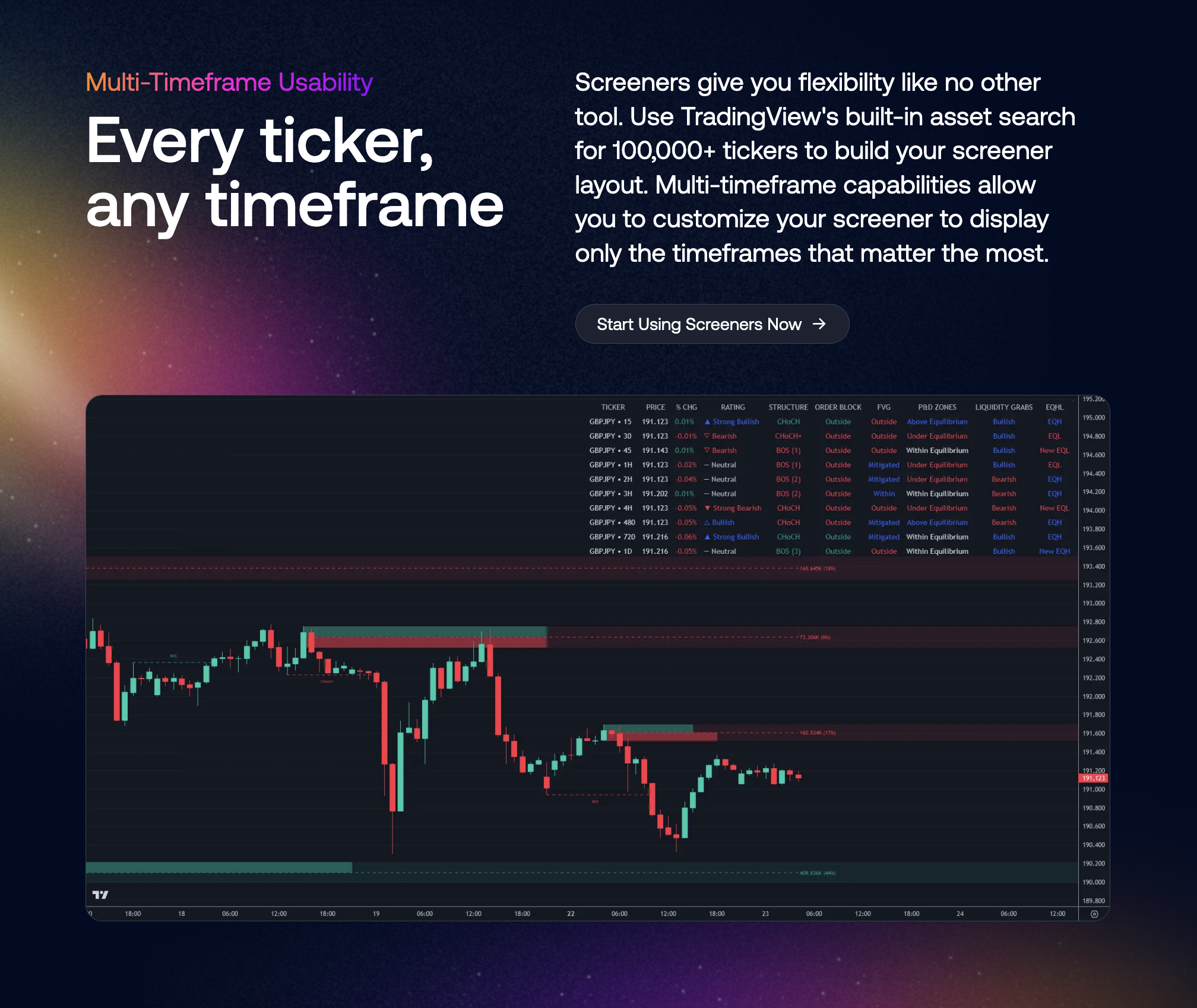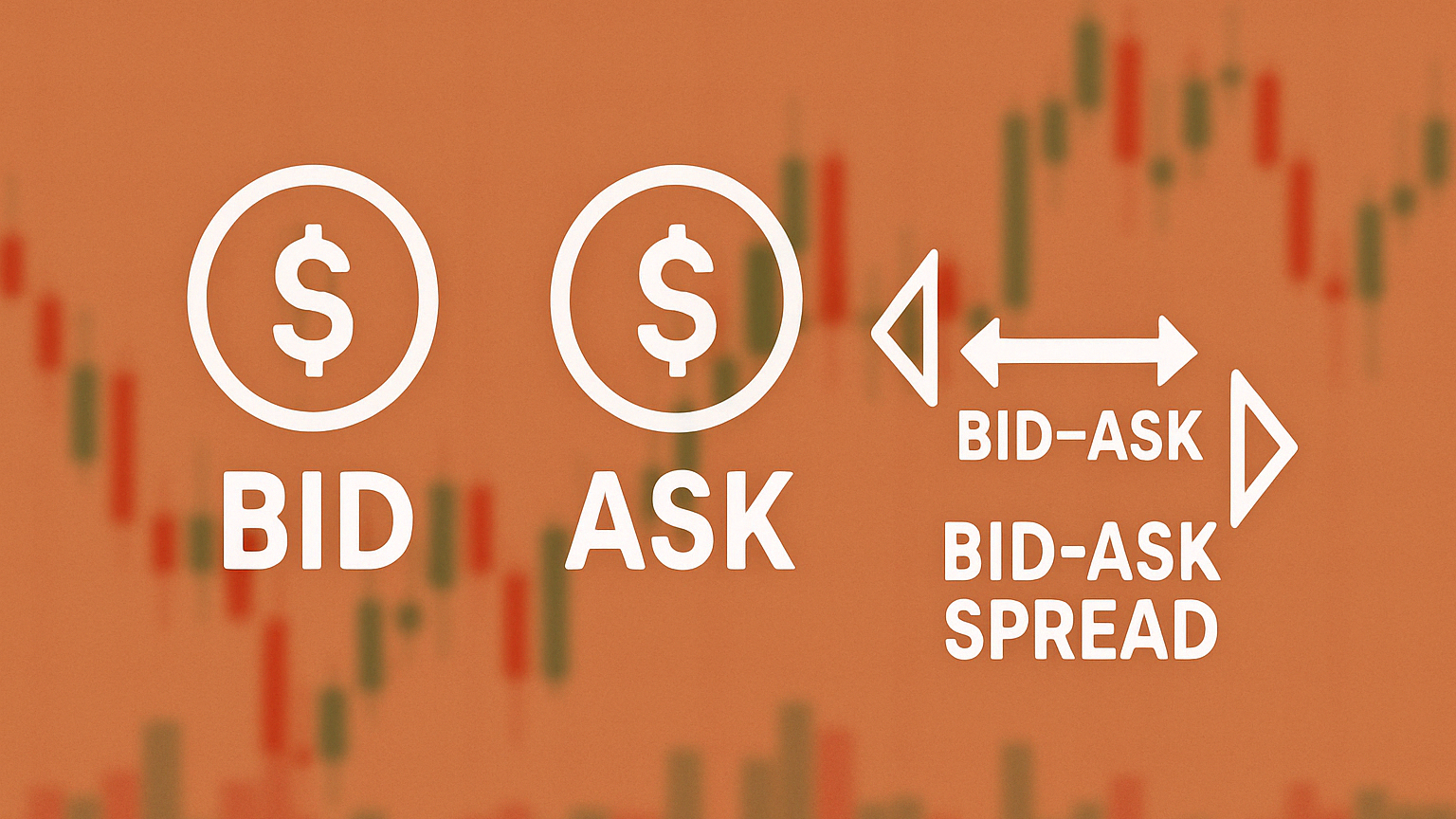Learn how to create an effective stock watch list to identify opportunities, manage risk, and enhance your trading strategy.
A stock watch list helps you focus on the best trading opportunities without getting overwhelmed by the entire market. It allows you to:
- Spot Opportunities: Identify stocks that match your trading strategy.
- Track Performance: Monitor how selected stocks perform over time.
- Manage Risk: Organize stocks and control your exposure effectively.
Here’s how to create a useful watch list:
- Set Goals: Choose stocks based on your trading style (e.g., day trading, swing trading).
- Use Stock Screeners: Filter stocks by volume, price movement, and technical patterns.
- Organize by Market Conditions: Tailor your list for bullish, bearish, or sideways markets.
- Limit Size: Keep your list manageable – 12–16 stocks for daily tracking, 50–100 for part‑time traders.
- Leverage Platforms & Indicators: Use indicators like moving averages, MACD, and platforms such as TradingView or LuxAlgo’s screeners for automated alerts and deeper insights.
- Review Regularly: Update weekly or daily to remove irrelevant stocks and adapt to trends.
A structured watch list saves time, reduces emotional decisions, and keeps you focused on actionable opportunities.
Selecting Stocks for Your Watch List
Setting Clear Trading Goals
The stocks you track depend largely on your trading style. Day traders typically go for stocks that are highly liquid and experience frequent price swings, while swing traders look at longer‑term trends and market events. If you're just starting out, you might focus on stocks priced between $1 and $20, as they offer a balance of lower capital requirements and potential returns.
Once you’ve defined your goals, stock screeners can help you narrow down your options.
Stock Screener Basics
Stock screeners are powerful tools for filtering stocks based on specific criteria. Key metrics to consider include:
- Volume: Keep an eye on stocks with sudden surges in trading activity.
- Price Movement: Look for pre‑market movers that are up by more than 10%.
- Technical Patterns: Focus on stocks showing breakouts or potential reversals.
- Market Capitalization: Evaluate both large‑cap and small‑cap stocks for variety.
Combine these insights with your risk‑management plan to make informed decisions.
Balancing Focus and Risk Management
Volume trends can reveal a lot about a stock’s momentum. For example, rising prices paired with increasing volume often signal up‑trends, while high volume with falling prices could indicate sell‑offs. If prices are climbing but volume is dropping, it might be a warning sign of a potential reversal.
To manage risk effectively, create separate watch lists tailored to different market conditions. Focus on stocks with clear catalysts, such as earnings announcements, FDA decisions, or major product launches. Large‑cap stocks are usually more stable and liquid, but adding small‑cap stocks to the mix can provide opportunities for higher returns.
"I use stock scanners to help me filter out all of the noise."
How to Make a Stock Watchlist in Under 15 Minutes
Setting Up Your Watch List
Once you've chosen stocks that align with your trading goals, it's time to organize them in a way that complements your strategy and the current market trends.
Grouping by Trading Style
Your watch list should reflect your specific trading approach. For day traders, quick access to stocks with high volume and large price swings is essential. Swing traders, on the other hand, should focus on stocks with strong technical patterns that evolve over days or weeks. Breaking your watch list into asset classes can also help avoid redundancy.
"With a watchlist, they are able to keep their trading simple than when they are tracking everything." – Real Trading™ Staff
Here’s a practical way to structure your watch list:
- Day Trading: Stocks with high volume and significant price movement.
- Swing Trading: Stocks with clear technical setups.
- Long‑Term Investing: Companies with solid fundamentals for extended holding periods.
Lists for Different Market Conditions
| Market Type | Focus Areas | Key Indicators |
|---|---|---|
| Bullish Markets | Leading stocks; breakout plays | New highs; rising volume |
| Bearish Markets | Defensive stocks; inverse ETFs | Support levels; oversold zones |
| Sideways Markets | Range‑bound stocks; dividend payers | Consolidation patterns; trading channels |
You can also track emerging trends like semiconductors or artificial intelligence to assess sector performance.
How Big Should Your Watch List Be?
- Part‑time traders: Monitor 50–100 stocks.
- Active traders: Keep a database of 300–500 stocks.
- Screen limits: Focus on 25–75 stocks, depending on your platform's layout.
A smaller, well‑understood list often outperforms a cluttered one. Separating market leaders from stocks nearing breakout points can help you quickly spot the best opportunities.
Technical Analysis Tools for Stock Tracking
Key Technical Indicators
Combine important indicators to identify when to enter or exit trades. The 50‑day and 200‑day moving averages help smooth out price data and highlight trend changes. The MACD (Moving Average Convergence Divergence) is great for spotting momentum shifts. For instance, in April 2023, a golden cross – when the 50‑day EMA moved above the 200‑day EMA – indicated a strong bullish trend. Once you've set up these indicators, automate alerts so you can act quickly when the market shifts.
Setting Up Price Alerts
Automated alerts make it easier to act on your analysis. Price alerts save you from constantly watching the market. Platforms like TradingView, trusted by over 90 million traders, offer powerful alert features. You can customize alert settings—single or repeated triggers—and choose how you want to be notified (mobile, email, or webhook).
Customizing Charts with TradingView

TradingView's charts allow for advanced customization, making technical analysis more efficient. Adding LuxAlgo screeners can help you surface high‑quality trade ideas faster.
Watch List Management Tips
Regular Stock List Updates
Make it a habit to review your watch list every week. Remove stocks that no longer align with your trading approach. As Tim Bohen advises:
"Go through your list often. Plan a personal schedule of how often you'll comb through your lists to see if stocks still match your trading criteria."
- Performance: Ensure each stock still fits your trading plan.
- Volume: Confirm stocks have enough trading activity for your strategy.
- Technical Setup: Verify that the stocks still present good trading opportunities.
Market Trend Updates
Adjust your watch list to reflect current market trends. During volatile periods, many traders increase their review frequency from weekly to daily. When adding new stocks, focus on trends in leading sectors that consistently outperform the market.
- Limit your core list to 12–16 stocks for easier tracking.
- Prioritize stocks approaching potential entry points.
- Use nightly scans to identify stocks meeting specific criteria, such as testing major resistance levels.
Using LuxAlgo Screeners for Better Results

LuxAlgo offers three complimentary screeners on TradingView that automatically surface high‑quality setups across thousands of tickers:
| Screener | Covers | What It Finds |
|---|---|---|
| PAC Screener | Price Action Concepts | Breaks of structure, liquidity grabs, and key support/resistance levels |
| S&O Screener | Signals & Overlays | High‑probability buy/sell signals, trend signals, and volatility shifts |
| OSC Screener | Oscillator Matrix | Momentum divergences, money‑flow extremes, and potential reversals |
By combining these screeners with tailored alerts, you can cut through market noise and focus on the most actionable opportunities that match your strategy.
Conclusion: Making Watch Lists Work for You
Creating a useful watch list involves setting clear objectives, reviewing it regularly, and staying disciplined in your monitoring. Establish your investment criteria and adjust your watch list as market conditions shift.
| Component | Implementation | Impact |
|---|---|---|
| Clear Criteria | Define specific metrics for stock picks | Keeps decisions focused |
| Regular Updates | Review weekly; check daily in active markets | Helps spot opportunities quickly |
| Risk Management | Diversify sectors; use stop‑loss orders | Safeguards your capital |
| Technical Analysis | Leverage indicators from LuxAlgo screeners | Improves pattern recognition |
"Action is the real measure of intelligence." – Napoleon Hill
Blend fundamental and technical analysis for better results. Pay attention to key metrics like EPS, revenue growth, and profit margins. LuxAlgo screeners can simplify the process by identifying high‑probability setups efficiently.
Cory Mitchell advises ensuring that indices are trending upward and that over 50% of stocks are trading above their 50‑day moving average before making trades.






